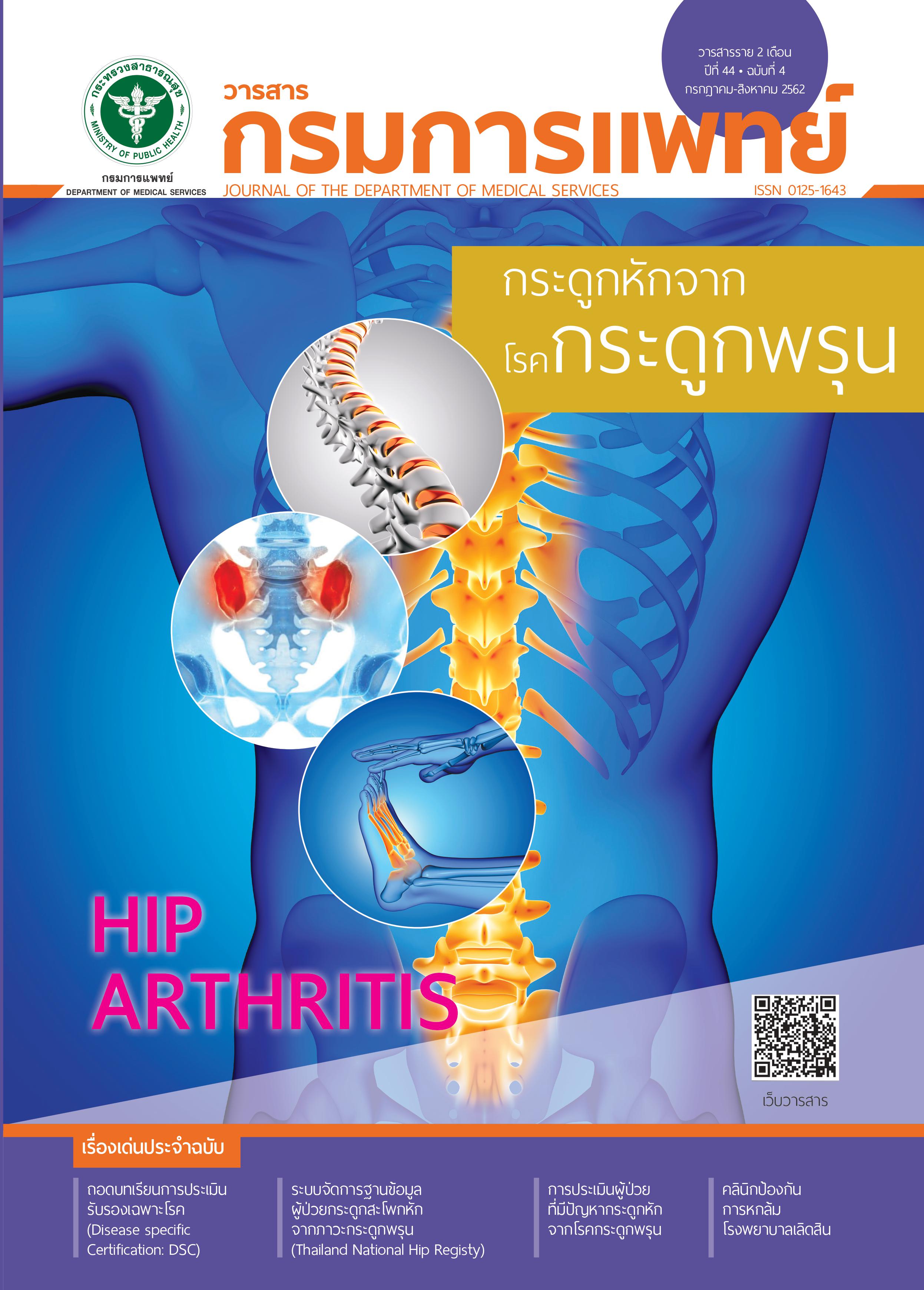Prevalence and Correlation of Myofascial Pain Syndrome in Patient with Possible Carpal Tunnel Syndrome
Keywords:
carpal tunnel syndrome, myofascial pain syndromeAbstract
Patients with carpal tunnel syndrome (CTS), often complain of pain and paresthesia of fingers and hands. Some may even progress to arms and shoulders. These symptoms can also be found in patients with myofascial pain syndrome (MPS). This study aims to evaluate the prevalence and correlation of myofascial pain syndrome in patients with possibly carpal tunnel syndrome.A total of 125 hands with suspected CTS were performed electrodiagnosis study on, between February-August 2018. Demographic data, chief complaint, pain score, paresthesia score, and presence of myofascial pain syndrome were collected and recorded, then electrodiagnosis studies were performed on. The studied variables were analyzed with a computer program using Chi-square and spearman’s rank correlation. 112 hands (89.6%) were diagnosed with CTS by electrodiagnosis and 56 hands (44.8%) were diagnosed with myofascial pain syndrome. Symptoms within the median nerve distribution were found in only 43 hands (34.4 %). MPS can be found in the group that symptoms spread beyond median nerve distribution more than the group that symptoms were within the median nerve distribution (p = 0.046). If the chief complain was pain, MPS can be found more than that within the paresthesia group (P < 0.001). We also found correlation between pain score and MPS (r2 = 0.596, p < 0.001). When analyzed with the ROC curve, MPS can be found with 76.7% sensitivity and 72.5% specificity (area .840, p < 0.001) when pain score is 5. We conclude that 44.8% of patients with clinical suspicion of CTS have MPS and clinicians should search for MPS if pain is the prominent symptom; if pain or paresthesia is spread beyond median nerve distribution; and if pain score is ≥ 5.
References
Babara E, Shapiro BE, David C, Preston D. Entrapment and compressive neuropathies, Medical Clinic of North America. 2009; 93:285-315.
Stevens JC, Beard M, O’Fallon WM, Kurland LT. Conditions associated with carpal tunnel syndrome, Mayo Clinic Proceedings. 1992; 67:541-8.
Becker J, Nora DB, Gomes I, Stringari FF, Seitensus R, Panosso JS, et al. An evaluation of gender, obesity, age, and diabetes mellitus as risk factors for carpal tunnel syndrome, Clinical Neurophysiology. 2002; 113:1429-34.
Craig M. McDonald, Jay J. Han, and Gregory T. Carter. Myopathic disorders. In: Randall L. Braddom, Leighton Chan, Mark AH, Karen JK, Dennis JM, Kristjan TR, et al, editors. Physical Medicine and Rehabilitation. 4th ed. Philadelphia: Saunders, an imprint of Elsevier Inc; 2011; 1117-22.
Jampanak S. Relationship between Electrodiagnostic Severity and Neuropathic Pain in Carpal Tunnel Syndrome, J Thai Rehabil Med. 2018; 28:15-20.
Travell JG, Simons DG, Simons LS. Myofascial Pain and Dysfunction: The Trigger Point Manual, Upper Half of the Body. Baltimore, USA: Williams & Wilkins; 1999.
Alvarez DJ, Rockwell PG. Trigger points: diagnosis and management. American Family Physician 2002; 65:653–60.
Simons DG. Referred phenomena of myofascial trigger points. In: Vecchiet L, AlbeFessard D, Lindblom U, editors. New trends in referred pain and hyperalgesia. Amsterdam: Elsevier Science; 1993:41–57.
Qerama E, Kasch H, Fuglsang-Frederiksen A. Occurrence of myofascial pain in patients with possible carpal tunnel syndrome - a single-blinded study. European Journal of Pain. 2009; 13:588–91.
Padua L, Lomonaco M, Gregori B, Valente EM, Padua R, Tonali P. Neurophysiological classification and sensitivity in 500 carpal tunnel syndrome hands. Acta Neurologica Scandinavica. 1997; 96:211–7.
Ashworth NL. Carpal Tunnel Syndrome. American Family Physician. 2007; 75:381-4.
Budhiraja V, Rastogi R, Asthana AK. Variations in the formation of the median nerve and its clinical correlation. Via Medica. 2011; 71:28-30.
Mat Taib CN, Hassan SNA, Esa N, Mohd Moklas MA, San AA. Anatomical variations of median nerve formation, distribution and possible communication with other nerves in preserved human cadavers. Via Medica. 2016; 76:38-43
MacDermid JC, Wessel J. Clinical diagnosis of carpal tunnel syndrome: a systematic review. Journal of Hand Therapy. 2004; 17:309-19.
Azadeh H, Dehghani M, Zarezadeh A. Incidence of trapezius myofascial trigger points in patients with the possible carpal tunnel syndrome. Journal of Reseach Medical Sciences. 2010; 15:250–5.
Randall L. Braddom, Leighton Chan, Mark AH, Karen JK, Dennis JM, Kristjan TR, et al. Physical Medicine & rehabilitation. 4th ed. Philadephia Publishing: Elsevier Inc; 2011.
Downloads
Published
How to Cite
Issue
Section
License
บทความที่ได้รับการตีพิมพ์เป็นลิขสิทธิ์ของกรมการแพทย์ กระทรวงสาธารณสุข
ข้อความและข้อคิดเห็นต่างๆ เป็นของผู้เขียนบทความ ไม่ใช่ความเห็นของกองบรรณาธิการหรือของวารสารกรมการแพทย์



